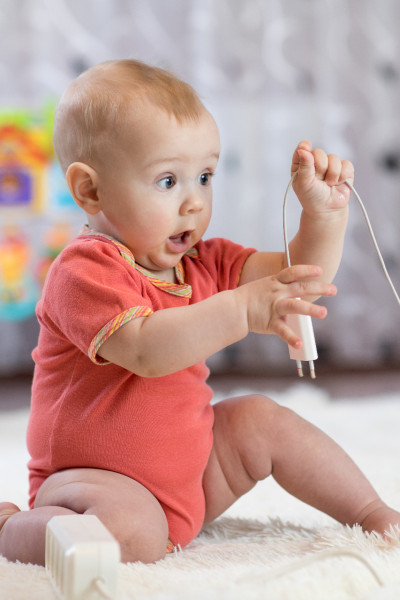 We would all say we stand for child safety. Yet every year, the CDC[1] tells us, approximately 12,000 children and young adults, ages 1 to 19 years, die from accidental injuries. Thousands more are sent to emergency rooms with other injuries.
We would all say we stand for child safety. Yet every year, the CDC[1] tells us, approximately 12,000 children and young adults, ages 1 to 19 years, die from accidental injuries. Thousands more are sent to emergency rooms with other injuries.
For parents, those numbers are staggering. What can we do to keep our children from becoming one of those sad statistics?
Let’s look at how and where the most common accidents occur. Then you can plan a strategy to prevent them happening to your child.
What are the most common childhood accidents?
Here’s what the CDC reported as the leading causes of fatal injuries:
- Suffocation was the worst killer among children less than one year old
- Drowning caused the most deaths of children 1 to 4 years old
- Motor vehicle accidents claimed the most lives of children between 5 and 19 years of age
The major causes of non-fatal injuries for newborns to 4-year-olds include:
- Falls (especially on stairs)
- Being struck by or against an object (like a falling bookshelf)
- Poisoning
How can we prevent these accidents? Let’s look at our homes, room by room, to find ways to protect our children.
What can I do to make my home safer?
Time to strategize. Let’s list key safety measures you may need to take in each room of your home.
Bedroom
- For babies 12 months old or younger, be especially vigilant about suffocating dangers in the crib. Keep cribs clear of any loose blankets, toys, or padding.
- Review our blog post on how to create a safe sleep.
- As baby starts trying to climb out of the crib, move the crib mattress to its lowest position. (See more ideas for preventing out-of-crib falls here.)
- Keep all curtain cords out of reach to prevent strangulation.
- Anchor furniture to the wall. Shelves, dressers, and more look like a ladder to toddlers and can easily tip if your child starts climbing on them.
Bathroom
- Never leave a child unattended in the bath tub. Young children can drown in just a few inches of water.
- Lock down toilet lids with child-safe devices. Toilets are not only germy; they’re also drowning risks.
- Unplug electrical appliances (hair dryers, curling irons, electric razors) when not in use. Keep them away from water (tub or sink) and out of your child’s reach (to prevent burning) when in use.
- Use safety latches on cabinets. Several designs are available for different types of cabinet door knobs and handles.
- Keep medicine in locked containers.
- Keep cleaners out of reach, in child-proof storage.
- Pad the bathtub faucet. There are lots of fun, soft faucet covers to protect your child’s head while bathing.
- Set your water heater no higher than 120 degrees Fahrenheit.
Living Room
- Anchor your TV to the wall. Accidents involving tipping flat-screen TVs have skyrocketed. Make sure yours won’t tip. Wall-mounted TVs are safest.
- Pad sharp corners on tables. As baby learns to pull up and walk, put adhesive pads over those sharp corners that can do serious damage to her face and head.
- Put away small objects. Objects smaller than one inch across can choke your child. This includes batteries—like the ones that fall out of your remote when the cover is off. Keep the little stuff picked up.
- Use outlet covers. Plastic outlet inserts are inexpensive and help keep the youngest children from having electrical accidents. Older, inquisitive toddlers may need you to attach actual covers over outlets that are within their reach.
Kitchen
- Gate your kitchen. The kitchen is the most dangerous room in the house. Keep it off-limits when you’re not there.
- Latch your oven. Use safety straps to keep your child from opening the door and getting burned. Don’t hang towels on the oven door; they invite kids to pull the door down on themselves.
- Turn pot handles away from edges. Don’t leave anything showing over the stovetop where your child could pull hot food down on himself.
- Attach childproof knobs to oven controls. Kids love to turn knobs.
- Keep knives out of reach.
- Don’t let cords dangle.
- Supervise your child in the kitchen.
- Latch your refrigerator.
- Store cleaners and dishwasher soap—especially pods—out of reach. Find a child-proof storage container for all household cleaners.
Stairs
- Install a child safety gate at the top and bottom of stairs to prevent falls.
- Maintain sturdy handrails and banisters. Check that spindles on banisters are no more than 4 inches apart.
- Keep clutter off the stairs.
Safe homes start with strategies
Now you have a to-do list to make your home safer for your child. Preventing accidents is a huge step toward child safety.
The other huge step is this: Stay vigilant! Your child will grow and change quickly. What he couldn’t do yesterday you’ll find him doing today. So stay close, keep your eyes on him (not your phone!), and teach him to be safe by your example.
If you need more ideas for your child’s safety, take a look at these articles:
Car seat safety: https://choicespregnancycenter.com/car-seat-safety-how-much-do-you-know/
Water safety: https://choicespregnancycenter.com/fun-in-the-sun-with-baby/
(For quick review of home safety, quiz yourself with the “what’s wrong with this picture?” article here.)
-------
For parents in our Earn While You Learn program
child safety devices are available in our Baby Buck Boutique at no cost.
If you don’t see what you need,
please just ask and we’ll get it for you.
Your child’s safety matters to us, too!
__________
